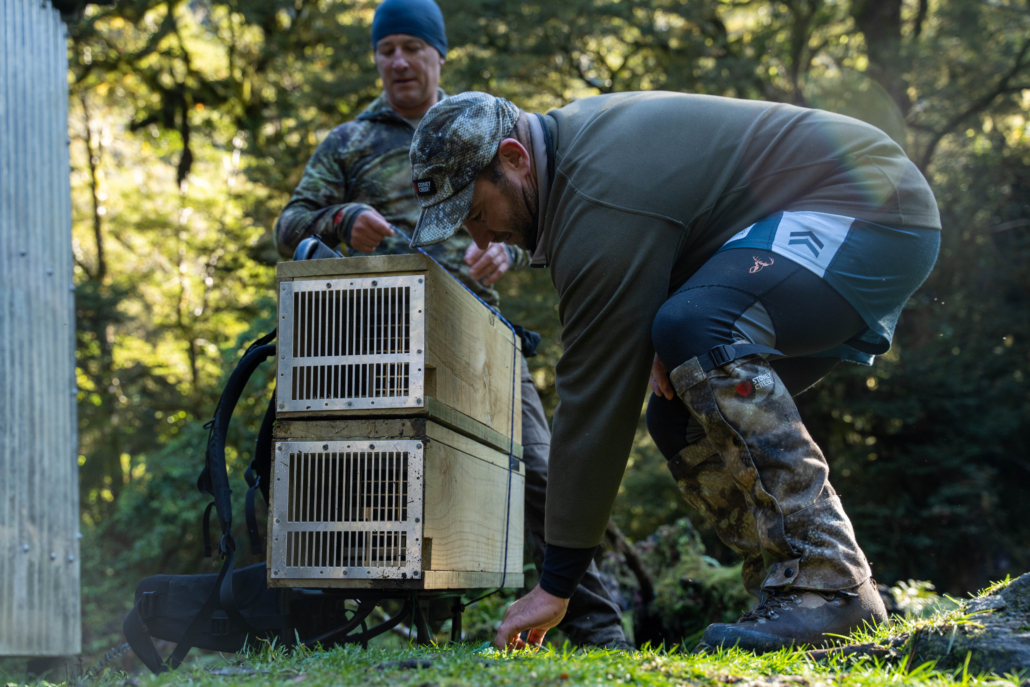FWF: The Crown Jewel of Conservation Under Threat
There is something misleading in the term “human nature.”
Sure, it harkens back to our origins and connecting with Mother Earth, but what truly is our nature? When you take a step back, the major issues with the modern conservation world all stem from human impact. That degree of burden varies, but there is always a hint of our fingerprints on just about every landscape around the world. From the vagaries of climate change to physical changes in habitat and species populations, human nature is unfortunately at the root of it all.
Playing off that train of thought, if we as a species are going to champion conservation—with the health of an ecosystem being most paramount—humans (and our insipid nature) will technically have to play a role in it, right? Well, there may be no better current example of this than what is happening in New Zealand right now.
New Zealand, because of their history of both purposeful and unintentional non-native species introductions—and now with a bustling population of 5.3 million individuals (a 25-percent increase since 2000, per Statistics New Zealand)—has important decisions to make in the months ahead. If there is any place in the world where both sides of human nature are being tested right now, it’s New Zealand.
Currently the New Zealand government is being challenged. New Zealand is a unique ecosystem to a world full of non-native animals, from its major export of sheep to invasive possums and highly sought-after deer. While some native species and fauna are unique to only New Zealand, these non-native imports threaten to demand more resources for management that could potentially infringe on native wildlife ranges. All species, both native and non-native require specific management policies for populations to remain in balance with both humans and their environment. But there is value to some non-native species, and New Zealand is essentially having to wrestle with this quandary: balance value and thriving native biodiversity.

The management of these non-native species in the vast landscapes and their impacts on native wildlife and fauna on public land in New Zealand falls on the government. This is where the human part of the equation gets tricky. In a perfect world, you would be able to have an ecosystem managed to the benefit of their constituents. In this world, we must consider the tax payer implications of doing the work needed to see this ecosystem flourish. You can only imagine the pushback from local authorities at the potential cost that would fall on the shoulders of New Zealanders.
But what if a non-profit decided to help the government? By working in lock step with local authorities to reduce the tax burden and create a value chain from the species being managed, we can create a scenario in which all stakeholders win.
Fortunately for us, there is the Fiordland Wapiti Foundation (FWF). This dedicated group of individuals is leading the conservation effort and fighting to protect and conserve New Zealand’s native species and fauna for future generations. Their noble work gets a little more complicated when considering they are ultimately fighting against human-introduced variables to the environment.
Fjordland Wapiti Foundation’s Fight:
- A species that is non-native is valued
- Species numbers are managed and reduced
- Biodiversity and fauna and flora conservation are priorities
Some statistics
- Fiordland National Park is 1.25 million hectares; the Wapiti area is 175,000 ha, approximately 14 percent of the area. For over 20 years, the Wapiti area has consistently produced the highest percentage of deer management per hectare than the remainder of the Fiordland National Park.
- Over the last 5 years, over 50 percent of the deer removed from the Fiordland National Park (1.25 Million ha) were removed from the Wapiti area (175,000 ha).
But at the end of the day, you have to ask yourself the question: why won’t the government do more?
It all comes down to value.
A normal New Zealander is not traveling to Fjordland National Park to help eradicate deer; it’s the hunter who will. And, they’re doing it with their own funds, contributing to the local economy and providing an environmental service in culling non-native deer, and allowing native flora to express itself in both presence and abundance.

Any non-profit in the wildlife conservation space, even like Blood Origins halfway around the world, can see the work that FWF are doing. So we donated $35,000 NZD to trapping efforts to aid in native fauna biodiversity conservation. The entire trapping program consists of almost 550 traps in the Castle, Worsley, Nitz, and Glaisnock Valleys alone. This is not government funded, but people funded.
The FWF has even taken things one step further: they trap non-native pests of native nesting birds in traps, all of the deer culled, their meat is harvested, at incredible additional costs, and this sustainable, organic meat back is put back into into local food pantries, and even into higher end food chains like Burger Fuel, and being served on Air New Zealand flights. Additionally, FWF takes care of all the hiking and walking tracks and huts for all New Zealanders to enjoy Fiordland at zero cost to them or the government.
But that is all in jeopardy now.
Forest and Bird, a rival non-profit and the same organization that wanted to wipe out all of the Tahr in New Zealand at the beginning of COVID is coming after the FWF and their incredible success story. But why?
If Forest and Bird were actually for wildlife they would have put their money where their mouth is and joined in the efforts of FWF like Blood Origins and other non-profits did.
Has F&B spent any funding in trapping in Fiordland National Park? No. Has F&B decided to fundraise to help reduce the quantities of wapiti in FNP? No.
F&B’s modus operandi is to put the New Zealand government under judicial review to remove Fiordland Wapiti Foundation from their work in Fjordland National Park. The organization that has done a yeoman’s job in maintaining and increasing biodiversity for endangered Kea’s, Kiwi’s, incredible bird life, plant life.
And now F&B is saying the only solution here is total eradication of ALL species—and that they want the government to pay for it—which means the taxpayers of New Zealand must pay for it.
If I had to look into the crystal ball, this legal action against Fiordland Wapiti Foundation and what F&B are looking to do has incredible consequence. If F&B wins, then unfortunately all deer herds in New Zealand are in jeopardy (Sika, Tahr, etc.), jeopardizing the economic impact of hunters and their ability to cull animals to the benefit of the ecosystem. But also the burden that places on the New Zealand government would be extraordinary and impossible to accomplish.
Is this the way forward for successful wildlife and biodiversity conservation? Suing each other?
Removing dedicated volunteer wildlife professionals and replacing them with a government/taxpayer-funded system (that doesn’t have the funding to do it) will leave New Zealand with underutilized animals and no actual means to control populations. There would be no entity doing the on-the-ground work to reduce nest predators that are harming iconic New Zealand fauna.
Or, there’s an alternative: a non-profit entity that pays for itself, brings value to a system, utilizes all of the resources for the good of New Zealanders, and implements on a volunteer basis massive efforts to increase New Zealand’s iconic biodiversity through trapping, significantly increasing Kea, Kiwi, Whio, and other native species abundances.
There is a solution here.
F&B and FWF want the same thing. Healthy, sustainable, native New Zealand fauna and flora. They both are champions for wildlife conservation. How about they go in together, change the archaic legislation that is under review, create a herd of special interest in the Wapiti, and through it achieve the unthinkable: a bipartisan union between unlikely bedfellows that does the best job possible where everyone wins. F&B wins, FWF wins, hunters win, birders win, hikers win, and most importantly, New Zealand iconic fauna and flora win.
The decision seems pretty obvious.


